EUROPEAN AWARD OF HUMAN GENETICS
IX EDITION – AMSTERDAM, May 27, 2000
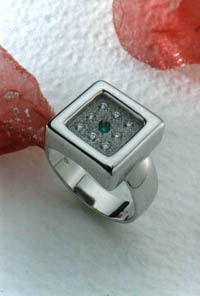
This year the prestigious “Baschirotto” award in Human Genetics is attributed to a great world-renowned scientist: Prof Dirk Bootsma from Rotterdam.
Once again thanks to the Association for Rare Diseases Baschirotto, Vicenza takes part in a very important scientific meeting, presenting its prestigious goldsmith’s art, through of an aspired award for the one who gave a main and innovative contribution to genetic diseases research.
The award consists of a beautiful white gold ring depicting the logo of the Association for Rare Diseases “Baschirotto” through a refined composition of diamonds with an emerald-cut drop in the middle, to celebrate the “marriage” between the scientist and the research, because his important discoveries have added precisely the precious “ring” at the wonderful chain of knowledge developed by humanity.
This jewel has been made by the skill and creativity of the goldsmith “Sinico” company from Vicenza, thanks to the willingness of its owner, Mr. Walter Sinico, belonging to the Goldsmiths’ section of API. The ring is offered by the Small and Medium Industries Association of Vicenza, which with great sensitivity supports the scientific research, encouraged, funded and conducted by “Mauro Baschirotto” Association for Rare Disease at the Institute for Diagnosis, Therapy and Care (B.I.R.D. Europe Onlus) at Costozza of Longare (VI).
It is a unique piece, especially designed, valuable and meaningful of meaning symbol, that reminds our city to European scientists. The creative efforts of Vicenza in the industry, but also in solidarity can develop works of art of high value. The award, which also consists of a plaque and a sum of 1,500 ECU, was delivered in the opening ceremony of the Meeting of the European Society of Human Genetics, which had taken place in Amsterdam in plenary session at h. 15.30 on Saturday 27 May ’00 in the presence of 800-1000 researchers.
Prof. Bootsma received the award after the professors Patricia Jacobs, Lore Zech, Mary Layon, Pierre Maroteaux, J. Ferguson Smith, Jean Weissenbach, Leena Peltonen, jeas-Lous Mandel, for scientific merit in Human Genetics.
What made that year especially beautiful and important was that the Prof. Dirk Bootsma was one of the first to identify and reproduce in laboratory a DNA region involved in the tumor-specific translocation: the Philadelphia translocation involved in Chronic Myeloid Leukemia. He also studied the genetic causes of rare diseases with tumor manifestations such as Xeroderma Pigmentosum, and others.
Prof Bootsma’s work and those who care about Human Genetics is very important for families and patients and is a great hope for those affected by rare diseases but also for those who are suffering from the most common forms of disease for example tumors.
OTHER EDITIONS
| XI Edition – Strasbourg, May 28, 2002 – Prof. Albert de la Chapelle from Ohio |
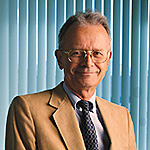 |
Prof. Albert de la Chapelle coming from Finland is now Professor of Genetic Oncology at Columbus Ohio State University where he is the head of Human Genetic Oncology. His research’s main aim was to map and clone the RMRP, HNPCC, MSH2, MLH1, PMS2 e PMS1 genes which are involved in the genetic form of cancer.He is one of the few researchers that have given some important contributions in the knowledge of the colon’s cancer genetics mechanism, which is probably the most studied cancer. |
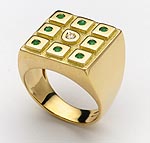 |
| X Edition – Vienna, May 19, 2001 – Prof. Robin Winter |
 |
Prof. Robin Winter is the professor of Clinical Genetic Dysmorphology at the Institute of Child Health and Great Ormond Street Hospital in London. He is the leader in the world for the diagnosis of dysmorphic syndromes and the study about the models in the congenital deformity. His important studies lead to the identification of new Syndromes, such as “Croniosynostosis Syndromes”. He is coauthor of important databases in the dysmorphic field which are relevant for clinical geneticists worldwide. |
 |
| IX Edition – Amsterdam, May 27, 2000 – Prof. Dirk Bootsma |
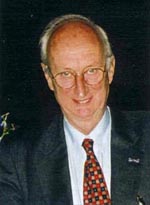 |
Professor Dirk Bootsma is the director of the Cellular Biology Department and of the Clinical Genetic at Erasmus University in Rotterdam.He was one of the first who identified and reproduced in laboratory a DNA region involved in the tumor-specific traslocation: the traslocation Philadelphia involved in Chronic Myeloid Leukemia. His main field of study is the genetic mechanism in cancer and in some rare tumors such as Xeroderma Pigmentosus. |
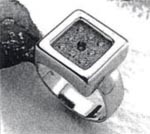 |
| VIII Edition – Geneva, May 30, 1999 – Prof. Patricia Jacobs |
 |
Prof. Pat Jacobs is the Salisbury Hospital genetic laboratory’s director in Salisbury, England. In 1959 she described the first human chromosome; now her main studies are focused in the genetic causes of autism. Thanks to her values in scientific field, she has recently received an award from the Queen Elisabeth. |
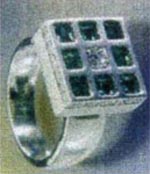 |
| VII Edition– Lisbon, May 11, 1998 – Prof. Jean-Louis Mandel from Strasburgo |
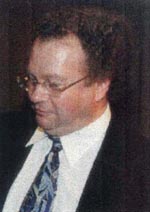 |
JL Mandel has given a great contribution to human genetics discovering the genetic trinucleotide expansion an innovative mechanism in neurodegenerative diseases; he has carried out specific studies on the chromosome X where are located the genes of several diseases, as Adrenoleukodystrophy, X-Fragile Syndrom, Muscular Dystrophy and others. |
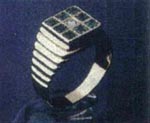 |
| VI Edition – Genoa, May 18, 1997 – Prof Leena Peltonen from Helsinki |
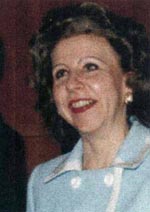 |
The Professor Peltonen is the head of Molecular Genetic Laboratory of the Superior Institute of Public Health of Finland. She is known for her studies of mapping, cloning and characterization of gene involved in several rare hereditary diseases mostly common in the Finnish population.She in particular studies the Marfan Syndrom, Lipofuscinosis, Multiple Sclerosis, Autoimmune polyendocrine syndrome type 1 (APECED). |
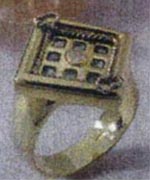 |
V Edition – London, April 12, 1996 – Prof. Malcom Ferguson Smith from Cambridge |
 |
Since 50’ Prof. Ferguson was involved in the cytogenetic studies. His main field of study are the chromosomal anomalies, prenatal diagnosis and molecular cytogenetic including in situ hybridization and the selection of isolated chromosomes. He also studied some hereditary tumors. |
|
| IV Edition – Berlin, May 24, 1995 – Prof. Jean Weissenbach from Parigi |
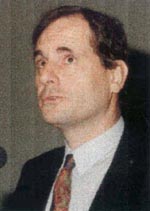 |
The Prof. Weissenbach is the head of Genethon Institute of Paris; due to his research studies he found the microsatellite cells in the human gene, labeling the sites of genes responsible of very serious pathological disease. This finding lead to the improving the project of human gene mapping. |
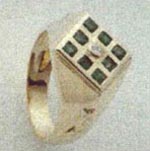 |
III Edition – Paris, June 1, 1994 – Prof.Mary Frances Lyon from Chilton, UK |
 |
The Prof. Mary Lyon is the director of the radiology unit of the Chilton University in England. Her studies allowed to understand the genetic mechanism of X-chromosome that involved in the manifestation of diseases as Muscular Dystrophy of Duchenne. |
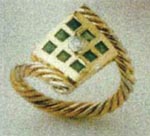 |
| II Edition – Barcelona, May 6, 1993 – Prof. Pierre Maroteaux from Parigi |
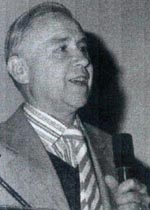 |
The Prof. Pierre Maroteaux is the director of the CNRS of Paris and he was mainly involved in studies of genetic bone diseases as Spondyloepiphyseal dysplasia, Acrodisostosis, Chondrodysplasia punctata and others. The cartilage study in the chondrodysplasias allowed to prove the clinical and radiological data and to compare the physiopathology between these diseases. |
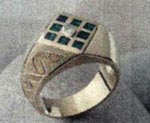 |
| I Edition – Elsinore, May 27, 1992 – Prof. Lore Zech from Uppsala |
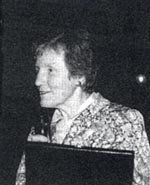 |
The Prof. Lore Zach has devoted her life to genetic research; in 1968 she discovered the chromosomes mapping allowing the possibility to identify the genes and their sites in the chromosomes. This method is actually used in the laboratories over the world. |
|






















